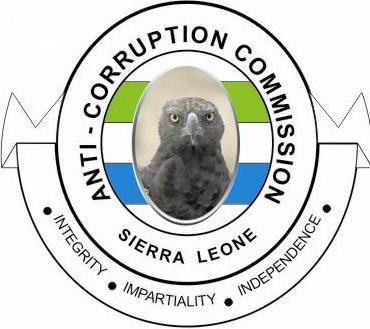Findings of the Corruption Survey Report: Action is needed now
News Item
By Abubakarr Turay ABT
The Anti-Corruption Commission last month launched the 2013 National Corruption Perception Survey. The ACC, with support from the World Bank, contracted the Centre for Development and Security Analysis (CEDSA) to conduct the survey.
The National Corruption Perception Survey, like similar works, seeks to gauge public perceptions on various corruption issues in Sierra Leone, with the objective to “provide credible data that will feed the National Anti-Corruption Strategy’s (NACS) monitoring and evaluation framework”. (The NACS is the people’s strategy to fight corruption in the country). The survey also “seeks to strengthen government’s commitment to fight corruption”.
In meeting the objectives and terms of reference for the survey, the researchers administered questionnaires among 2000 respondents across the country; and also interviewed policy makers including President Ernest Bai Koroma, cabinet ministers, top management of the ACC, business establishments, civil society organisations and ordinary Sierra Leoneans.
The respondents see greed and selfishness as the lead cause of corruption in the country. For the household respondents, the police and the judiciary are the most corrupt institutions, while private sector respondents see the Ministry of Health as the most corrupt institution, while there are also grim statistics for customs officials and the National Revenue Authority. Thanks for the political will and the robustness of the ACC in the fight against corruption in the country, an overwhelming majority of the respondents say the government and the ACC are doing well in combating the scourge in our country.
The ACC ensured that the heads of public institutions were invited to the formal launch of the survey report, some MDAs sent junior officers to represent them. The ACC also provided copies of and factsheets on the survey to all participants. The same was done when the Commission launched the NACS 2014-2018. This was meant for public institutions to act on the findings of the reports. It is reassuring to hear of the Memorandum of Understanding signed on Wednesday between the Sierra Leone Police and the National Revenue Authority. Part of the objectives of the MOU is for the two institutions to collaborate to combat corruption, tax fraud and smuggling in a bid to maximize efficiency, effectiveness and service delivery. This is a great start to the adoption of anti-corruption measures although there is much more work to be done.
However, some of the corrupt activities within public institutions are still prevalent as these institutions do not prioritize issues of integrity and transparency. It is therefore no surprise to hear an assistant physician of a government hospital accusing the medical superintendent of the hospital on a radio programme last week of not showing any transparency in disbursing and expending the money government gave to the hospital to respond to the Ebola disease. It was with this in mind the ACC issued a press statement warning all individuals and institutions collecting donations in the name of responding to the Ebola outbreak to use such donations judiciously or face the wrath of the law.
It is often costly and labour-intensive to produce documents such as the National Corruption Perception Survey and the NACS. The objective of producing such reports is not for them to be shelved but rather to utilize the findings in them to improve service delivery. We can kill two birds with one stone if we mainstream anti-corruption measures in public institutions- we can institute the values of integrity and transparency and end corruption, and at the same time end poverty. These are twin issues. This is why Transparency International once told world leaders that “You need to fight corruption to win the battle against poverty.” This means that anti-corruption and governance go hand in hand.




